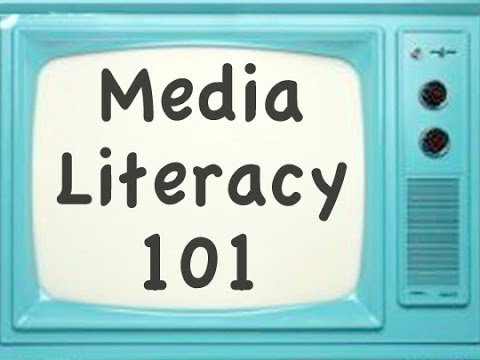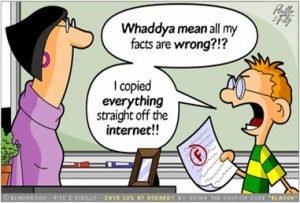Take Me To Church: How Grade 8 Students Thought Hozier Was Homophobic

I had the privilege of giving a keynote presentation to an elementary school wellness convention. The audience consisted of grade 5, 6, 7 and 8 students, quite a large gap in age and maturity. I always go into a presentation with the intention that if I can get through to just one kid in that audience, my efforts will not have been lost. How do you speak about media literacy to a group this diverse and get your message across in only 20 to 30 minutes? Truthfully, it is not easy because media literacy could be an ongoing lesson plan in not only the lives of our youth but in the everyday consumption we as adults experience as well.
It is difficult to keep up with the fast paced world online let alone in all the other forms of media that surrounds us every day. If you feel the pressure to understand it all please know you are not alone, and the truth is you simply can’t, it’s impossible. Just when you think you are up to speed on the latest trends they change an hour later. So now what? How do we help our children learn to be safe? Truthfully, that is a really difficult question and one that I can not fully answer, but I can give you three small steps that I use in order to teach myself, and the youth I work with about taking back the power of images and the information we absorb daily.
1.) Learn to deconstruct the images around you. Observe how the images make you feel. Do they make you angry, excited, happy, anxious? When you feel these emotions then ask yourself, “why?” are you feeling this way. It’s amazing what answers you can get from your subconscious mind when you take part in this exercise. Sometimes we are unaware of how affected we are by the media around us and if we are unaware how are we going to help our children. I will give you two examples of this.

A few years ago when I was working on a presentation around the subject of hypersexualization one of the young people I worked with saw this image and bluntly said, “But Cara, I like this image.” I wasn’t shocked by her response and I responded, “I totally understand, these images are very well laid out, they are colourful and bright and a group of very talented people put a lot of thought into the design in order for you to like it. I just have one question for you, why do you like it?” Then I giggled with her and pointed at the gossip girls and asked, “Are you hungry?”
It was a simple question but one that shook her to the core. “Oh my God,” she replied, “I have no idea why!” In only a few moment one of the many veils had temporarily been lifted off her eyes and she was in shock because no one had ever asked her such a simple question where she has such a powerful response.
2.) Don’t assume the youth in your life understand the meaning behind the media they consume. This is an important one because I think as adults we can be a little misguided in believing our children understand what they are consuming because they are subjected to more content than we were as children. Here is an example.
After I gave my keynote presentation to the junior high students, who I mentioned above, I was invited to give a short workshop to various classes. When I was introduced to the grade eight students they were excited about the topic and one of the youth responded, “It reminds me of that video Take Me to Church by that singer Hozier.” At the time this song was new on the charts and although I had heard it on the radio I had not seen the video.
“Really?” I asked, “What is it about the video that intrigues you?”
The youth began explaining to me how this singer was totally homophobic and described a video that sounded like something out of a horror movie. Curious to view it myself I asked the teacher if it was appropriate to play in in the classroom. She agreed and as I watched this extremely powerful video I realized that all of the youth in this room were perceiving this video in the complete opposite light that Hozier had intended.
When the video ended I stood in front of the class and responded with a question.“Do you understand that Hozier is actually commenting on how he is against homophobia and that he, in fact, is not homophobic?”
Again, such a simple question but you could see the look of realization come across their young faces. “Oh my God,” they said in shock, “That totally makes sense now!”
Closing the conversation I asked them, “If I had not watched the video with you and pointed this out how long would you have gone thinking that this singer was homophobic?” When you deconstruct the image and the message that accompanies, it no longer has the same influence.

3.) Have open conversations. Okay, here’s the thing, I get that sometimes it can be really awkward and uncomfortable to have difficult conversations about sex with you children, but I do feel it’s important. I spoke in an earlier blog about how my son thought that sex and rape were the same thing after hearing about it on news. How long would he have gone thinking that if I chose to not talk about it with him because he was young and I was uncomfortable? Trust me when I say I was more uncomfortable with him believing they were one in the same than avoiding the conversation. Ask your kids about what they are watching online, how does it make them feel and do they understand it? We think we can monitor everything but it only takes one click for them to be exposed to something really disturbing and it can happen the very second you turn your back to grab your coffee behind you. Trust me. Media can be a violation of their innocence and as much as you want to control their exposure to it, and by all means try, in the end it is almost impossible. So ask tough questions and help to deconstruct the message for them. It will not only empower them, but you as well.